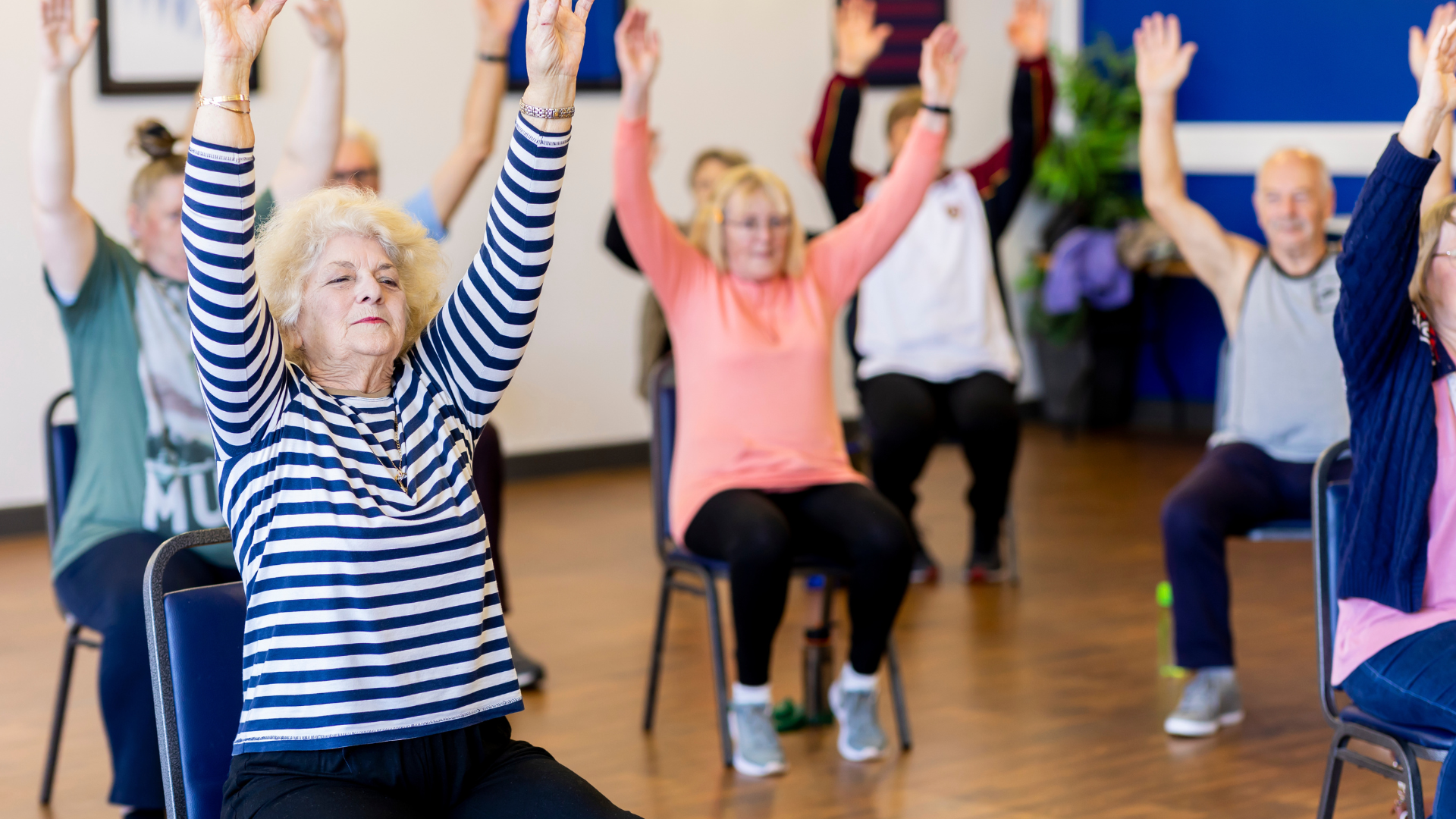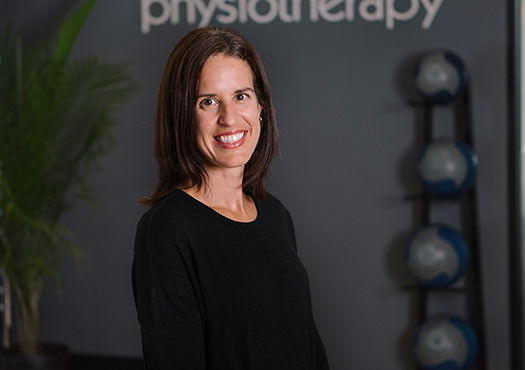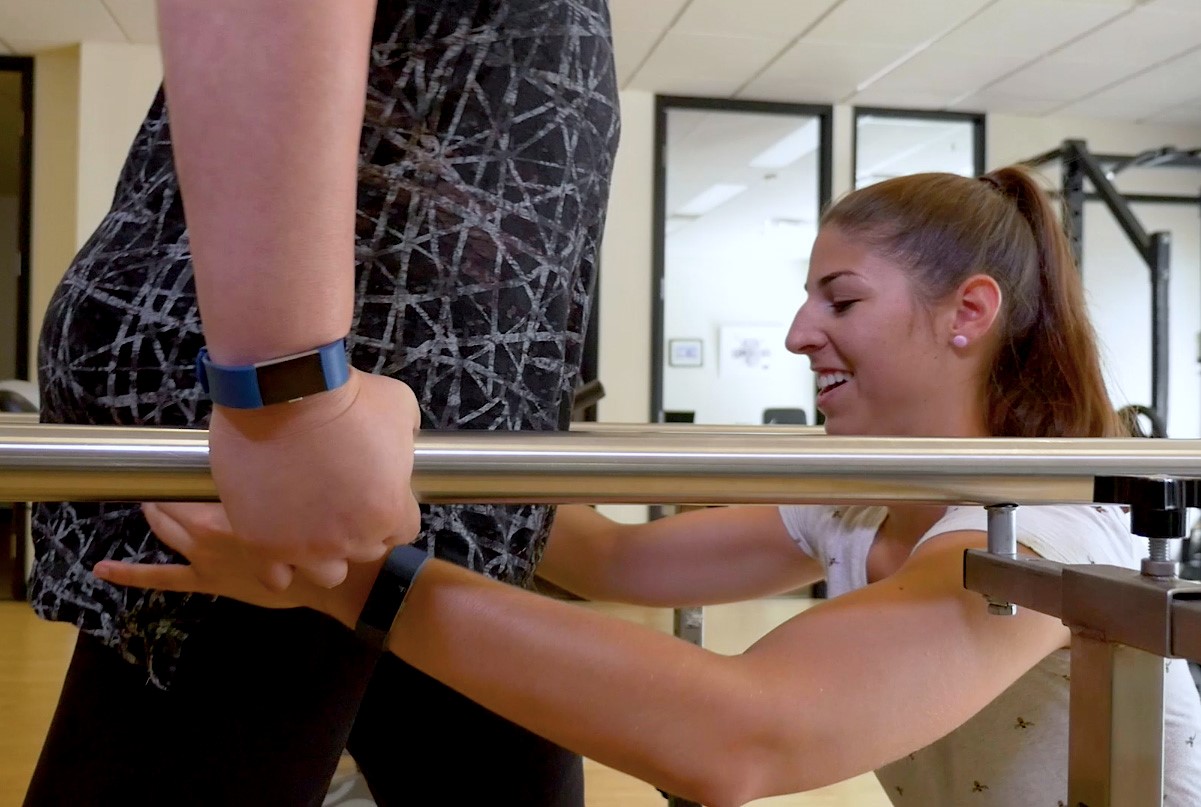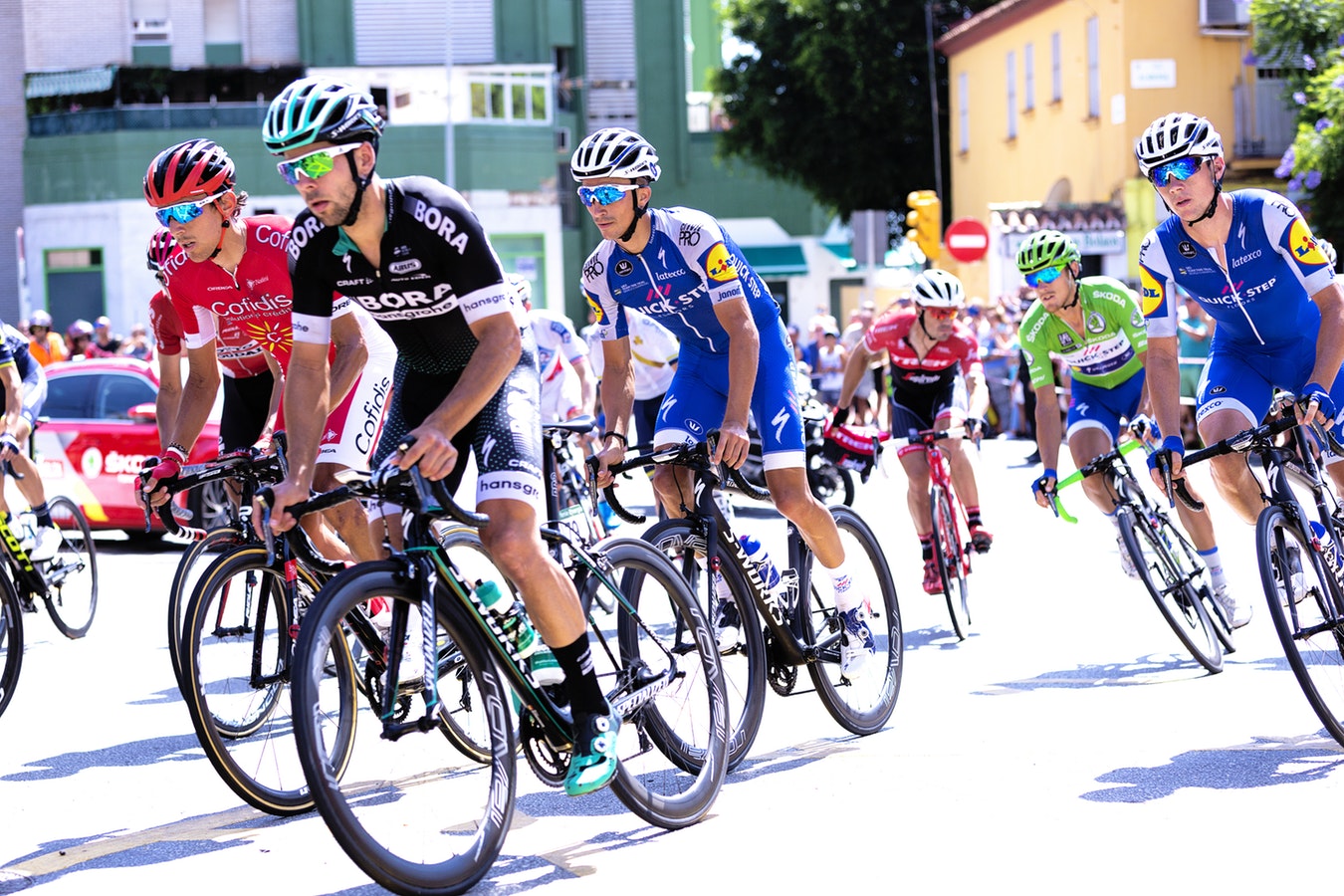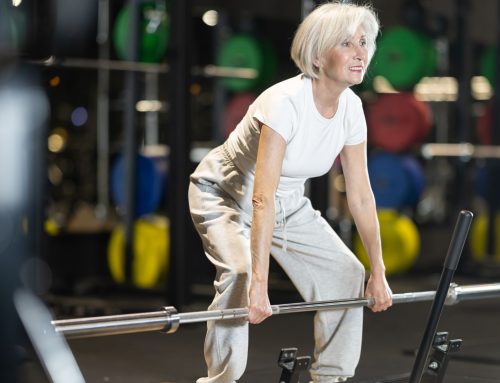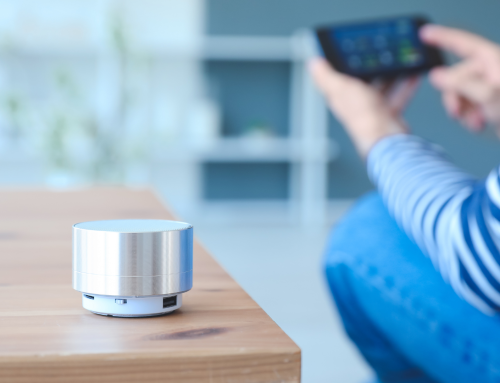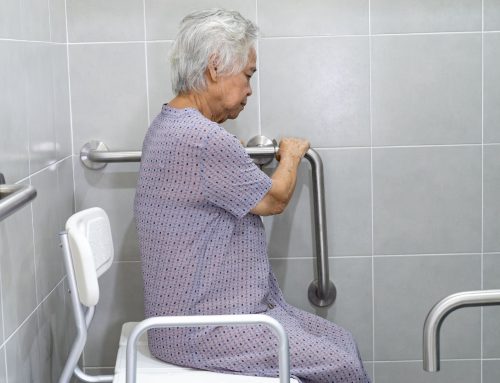Everyone can benefit from regular exercise no matter your age or ability. For people with limited mobility—whether due to injury, illness or age—finding exercises and activities that are safe yet effective for promoting better health can be challenging.
Seated exercises can provide a great option to those with limited mobility, while still providing the same benefits for strength and endurance. In this blog we look at the types of conditions that would benefit from seated exercises, the evidence for this type of activity and the different types of exercises you can do in this position.
Table of Contents:
- Who should be doing seated exercises?
- The benefits of seated exercise
- The social benefits of group exercise
- Types of seated exercise
- Conclusion
Who Should Be Doing Seated Exercise?
Many different types of conditions can lead to limited mobility. Neurological injuries such as stroke and spinal cord injury can cause paralysis leading to restricted use of the lower body.
With people living longer and with chronic conditions, it is important to provide exercise options for those varying abilities. Orthopaedic conditions such as arthritis, joint replacement surgery or lower back conditions may result in limited ability to stand and/or walk. Respiratory conditions such as chronic obstructive pulmonary disease, those recovering from any type of surgery or people with cardiac conditions may have limited endurance for standing and mobility.
Another factor that will influence the ability to participate in standing exercises is a person’s balance. For those at risk of falls and with poor balance, seated exercises provide a safe alternative to maintain strength and conditioning.
The Benefits of Seated Exercise
Physical activity is essential for reducing the risk of disease, improving physical and mental health and maintaining one’s independence. As people age, the importance of activity becomes paramount.
The evidence suggests that chair-based exercises are a great way to maintain physical activity in older adults. A systematic review found that chair-based exercise improved upper extremity function (including grip strength – a key indicator of independence in older adults) and lower extremity function (including 30-second chair stand – an indicator of falls in older adults).[i]
The benefits also transfer to other populations. Another systematic review looking at stroke patients found an improvement in balance and mobility after participating in chair-based exercise programs.[ii]
Not only do chair-based exercise interventions promote physical health but the evidence suggests that they can also have a positive effect on mental well-being. A study in older adults found that chair-based yoga showed improved mental well-being of participants including reduced anxiety and depression and improved mood.[iii]
The Social Benefits of Group Exercise
Joining a seated exercise group offers more than just physical benefits—it provides meaningful social advantages as well. These classes create a sense of community and belonging, helping participants build friendships and reduce feelings of isolation.
The group setting encourages shared motivation and support, which can boost confidence and make exercise more enjoyable. Engaging with others in a positive environment also promotes mental well-being, reducing stress and improving mood.
In addition, participants have the opportunity to learn from each other, share experiences, and celebrate progress together. Regular group sessions establish routine and accountability, making it easier to stay active and connected.
Types of Seated Exercise
There are many types of seated exercise programs to fit the needs of the individual including:
Seated Yoga
- Focus: Flexibility, breath control, relaxation
- Exercises: Seated twists, forward bends, overhead stretches, neck rolls, deep breathing
- Benefits: Enhances mobility, reduces stress, promotes body awareness
- Ideal For: Chronic pain, arthritis, neurological conditions
Seated Strength Training
- Focus: Muscle building and endurance
- Exercises: Arm curls, leg extensions, seated marches, resistance band rows
- Equipment: Light hand weights, resistance bands, ankle weights
- Benefits: Prevents muscle loss, supports daily functional tasks
- Ideal For: Individuals with reduced standing tolerance or post-surgery recovery
Seated Cardio
- Focus: Cardiovascular endurance and energy levels
- Exercises: Seated marching, fast arm swings, seated jacks (leg + arm movements), toe taps
- Benefits: Increases heart rate safely, improves stamina
- Ideal For: Heart health, fatigue management, chronic illness
Neuro-Physiotherapy-Based Seated Programs
- Focus: Coordination, neuroplasticity, motor control
- Exercises: Cross-body movements, rhythmic tapping, dual-task exercises (e.g., counting while moving)
- Benefits: Supports recovery in conditions like stroke, Parkinson’s, MS
- Ideal For: Neurological population
Seated Tai Chi or Qigong
- Focus: Gentle, flowing movements for balance and breath
- Exercises: Arm waves, slow kicks, wrist rotations, mindful breathing
- Benefits: Reduces stress, improves balance, enhances mind-body connection
- Ideal For: Older adults, those with anxiety or limited stamina
Functional Seated Exercise Programs
- Focus: Daily activity simulation
- Exercises: Reaching, lifting, pushing and pulling movements
- Benefits: Prepares individuals for real-life tasks like dressing or cooking
- Ideal For: Rehabilitation and occupational therapy goals
Conclusion
Incorporating seated exercises into your daily routine can be a simple yet powerful way to maintain strength, mobility, and confidence — even when movement is limited. At Propel Physiotherapy, we believe that everyone deserves access to movement that feels safe, functional, and empowering.
Whether you’re recovering from an injury, living with a neurological condition, or simply looking for a gentler way to stay active, seated exercises offer an adaptable foundation for better health. As always, consult with your physiotherapist to ensure exercises are tailored to your specific needs and goals. Movement is possible — and we’re here to help you make it meaningful.
References
[i] Klempel N, Blackburn NE, McMullan IL, Wilson JJ, Smith L, Cunningham C, O’Sullivan R, Caserotti P, Tully MA. The Effect of Chair-Based Exercise on Physical Function in Older Adults: A Systematic Review and Meta-Analysis. Int J Environ Res Public Health. 2021 Feb 16;18(4):1902. doi: 10.3390/ijerph18041902. PMID: 33669357; PMCID: PMC7920319.
[ii] Mackie P, Eng JJ. The influence of seated exercises on balance, mobility, and cardiometabolic health outcomes in individuals living with a stroke: A systematic review and meta-analysis. Clin Rehabil. 2023 Jul;37(7):927-941. doi: 10.1177/02692155221150002. Epub 2023 Jan 10. PMID: 36628495; PMCID: PMC10226004.
[iii] Frampton, K., Oppedijk, L., Hadley, R., & Annett, L. E. (2024). Reduced Anxiety and Depression and Improved Mood in Older Adults Living in Care Homes After Participating in Chair Yoga. Journal of Applied Gerontology, 43(10), 1408-1418. https://doi.org/10.1177/07334648241241298 (Original work published 2024)
Written by

